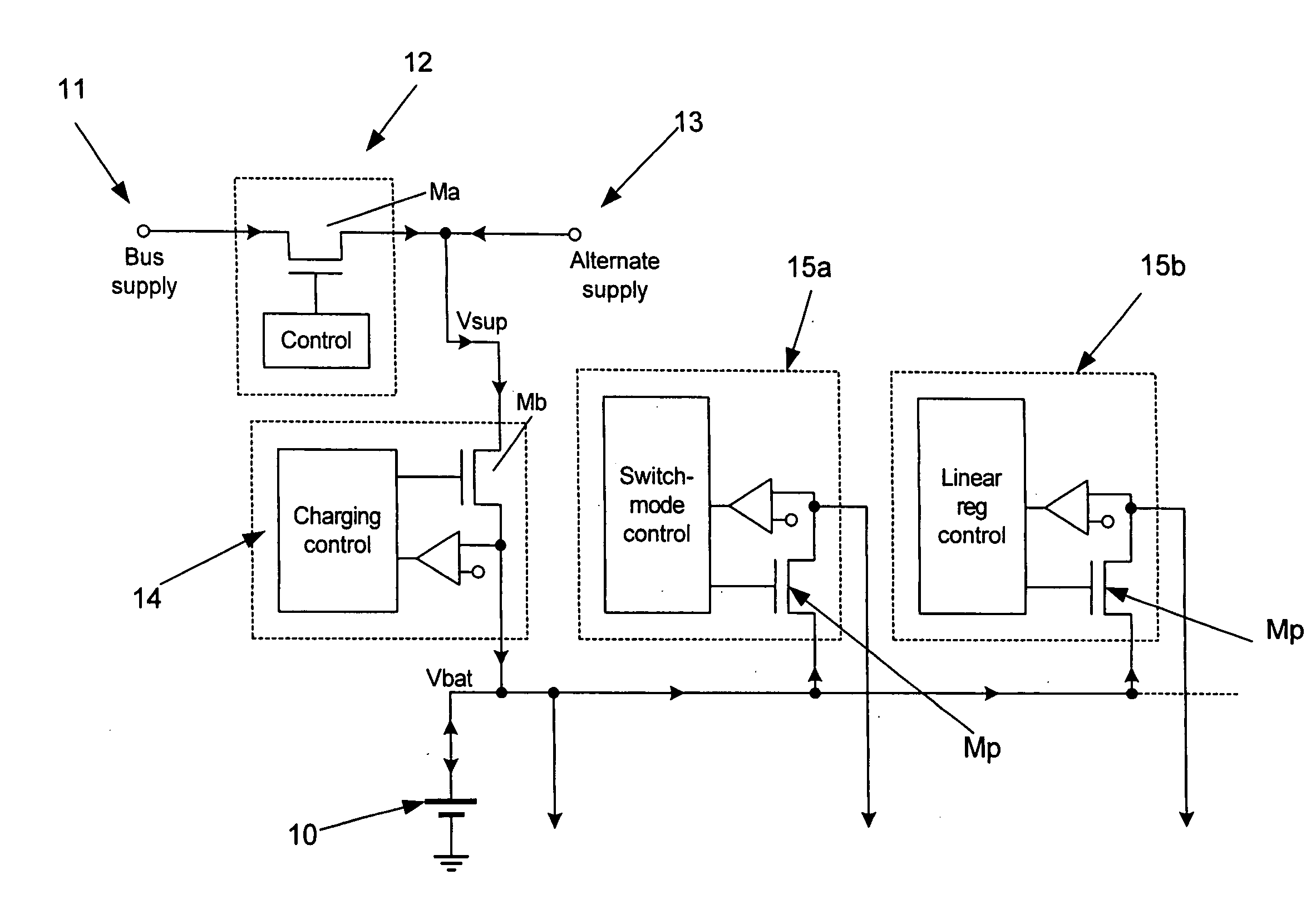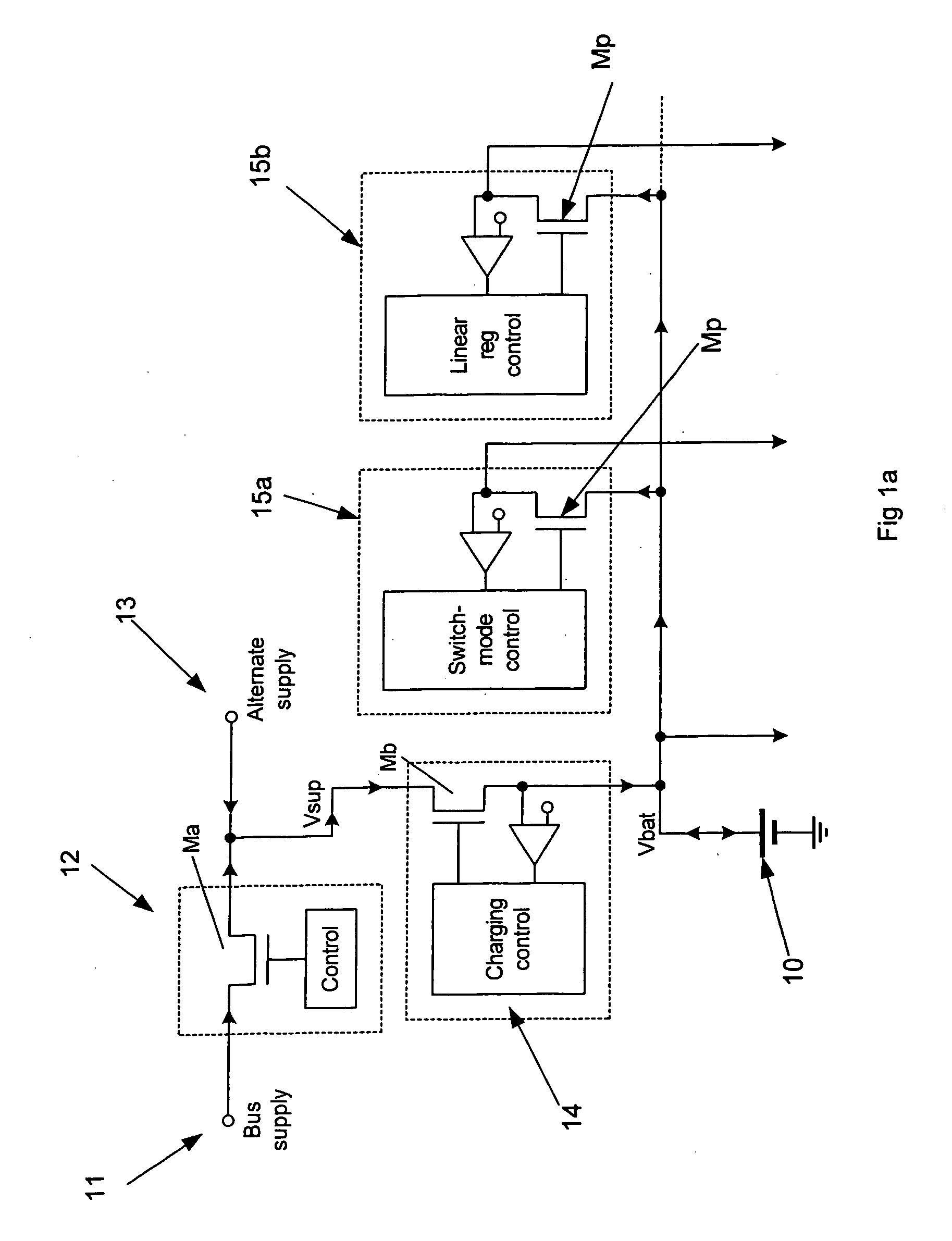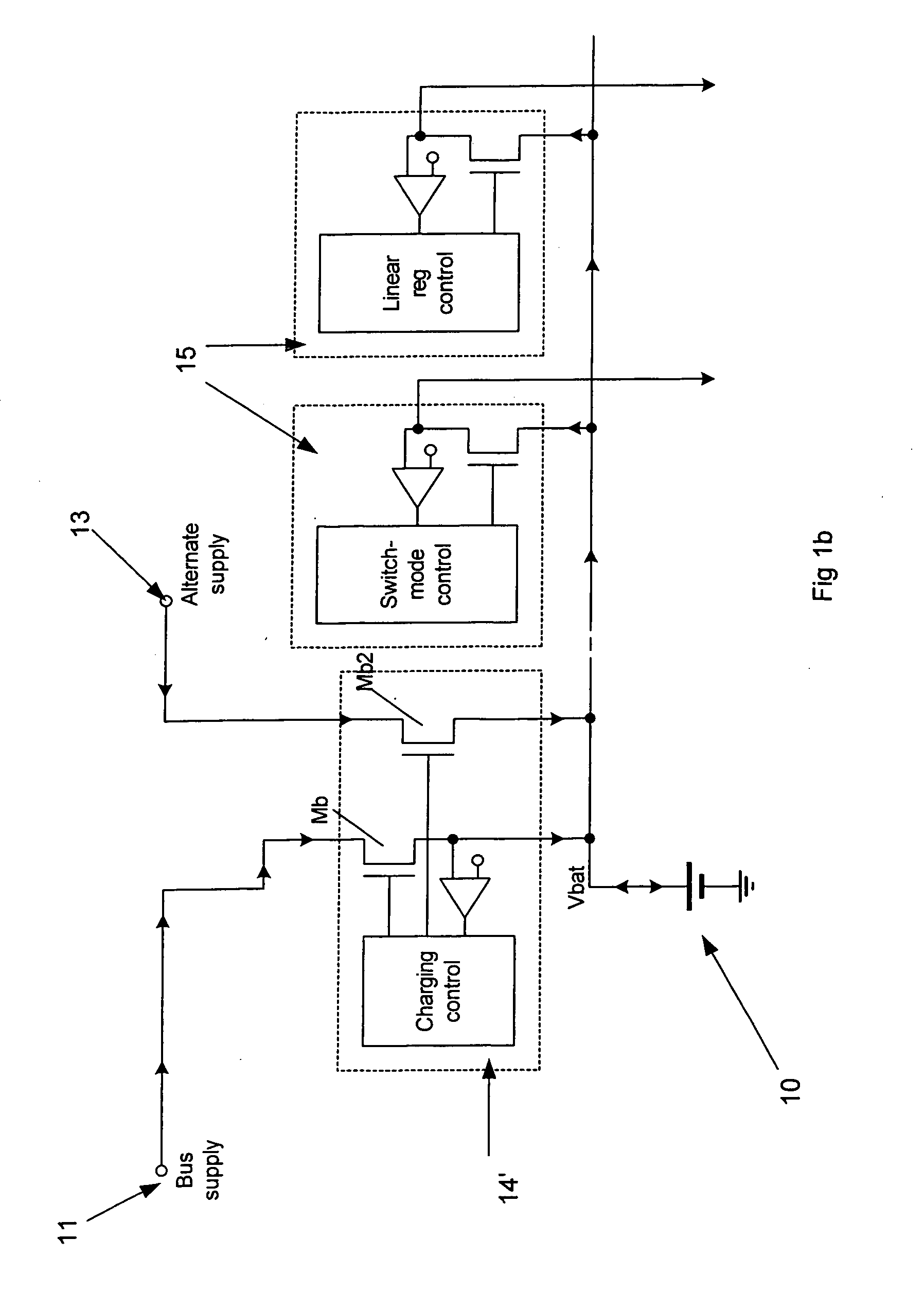Dual power bus for battery powered device
a battery-powered device and dual-power bus technology, applied in the direction of electric variable regulation, process and machine control, instruments, etc., can solve the problems of inability to work properly, take several minutes or longer, and undesirable behaviour of consumers, so as to improve the effective battery life, reduce the voltage drop of the battery, and improve the effect of battery li
- Summary
- Abstract
- Description
- Claims
- Application Information
AI Technical Summary
Benefits of technology
Problems solved by technology
Method used
Image
Examples
Embodiment Construction
[0055]FIG. 4 shows a power supply circuit according to a first embodiment and comprises two non-battery power supplies, a bus supply 11 such as the power wires in a USB cable, and an external supply 13 such as a pre-regulated mains source. A bus regulator 12 conditions the bus supply 11, and this and the external supply 13 are connected at a common non-battery supply node Vsup which is coupled to a first power supply rail or bus PSR1. As with the systems of FIGS. 1 and 3, a battery charger circuit 14 is coupled between the non-battery common supply node Vsup and a re-chargeable battery 10. Other components in common with FIGS. 1 and 3 are referenced the same. The battery 10 of FIG. 4 is connected to a second power supply rail or bus PSR2 (also Vbat). Thus two power supply rails (PSR1 and PSR2) are provided for the load regulators 25.
[0056] The load regulators 25 each have two inputs, each with an associated pass device Mp1 and Mp2. One such input (Mp1) is connected directly to the ...
PUM
 Login to View More
Login to View More Abstract
Description
Claims
Application Information
 Login to View More
Login to View More - R&D
- Intellectual Property
- Life Sciences
- Materials
- Tech Scout
- Unparalleled Data Quality
- Higher Quality Content
- 60% Fewer Hallucinations
Browse by: Latest US Patents, China's latest patents, Technical Efficacy Thesaurus, Application Domain, Technology Topic, Popular Technical Reports.
© 2025 PatSnap. All rights reserved.Legal|Privacy policy|Modern Slavery Act Transparency Statement|Sitemap|About US| Contact US: help@patsnap.com



